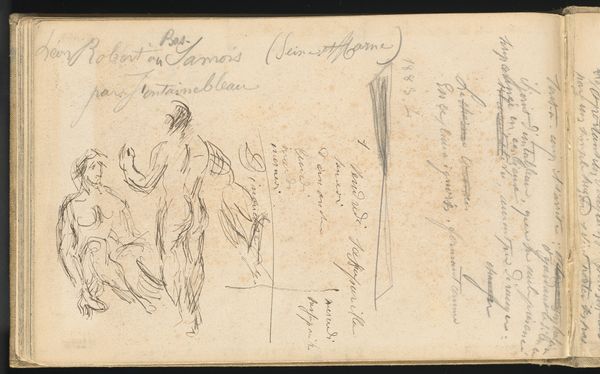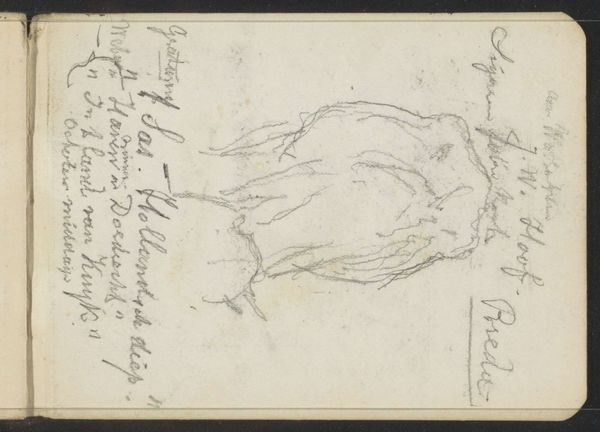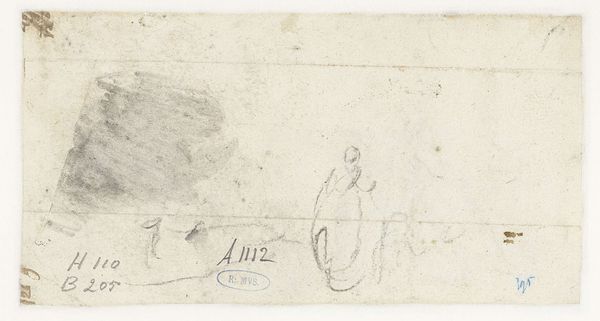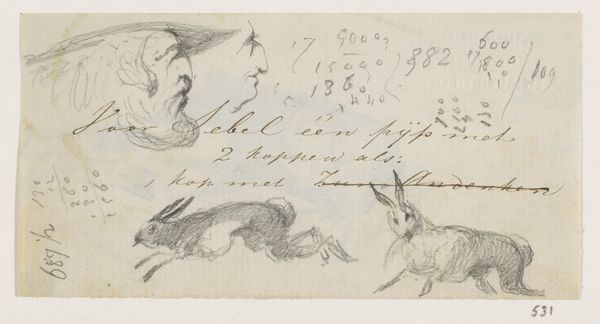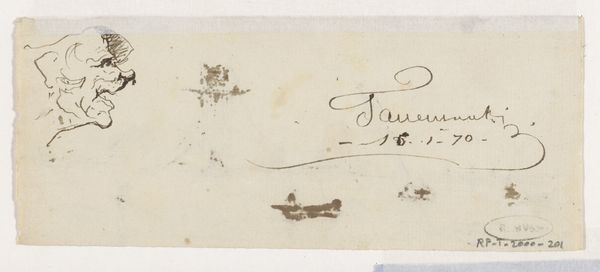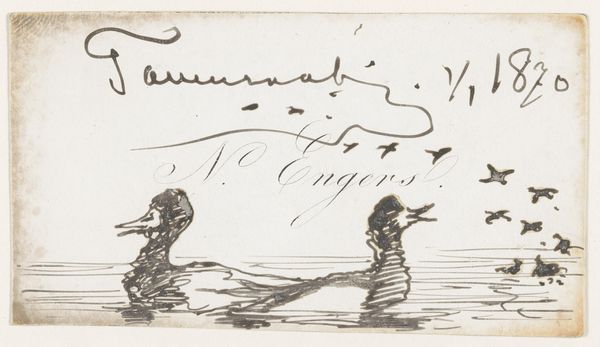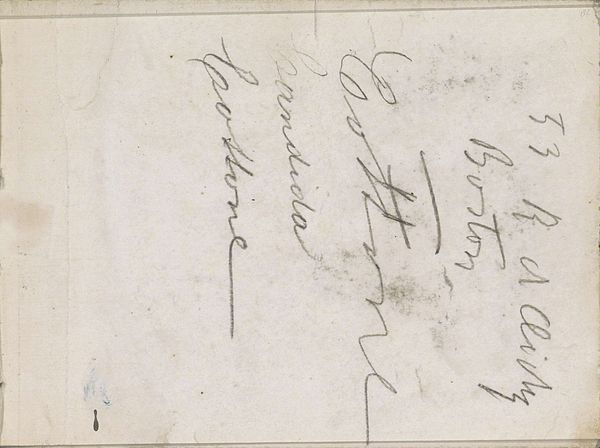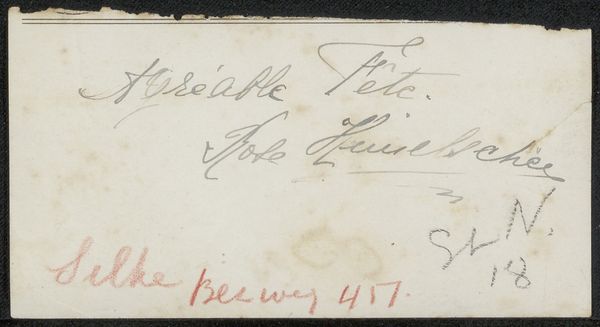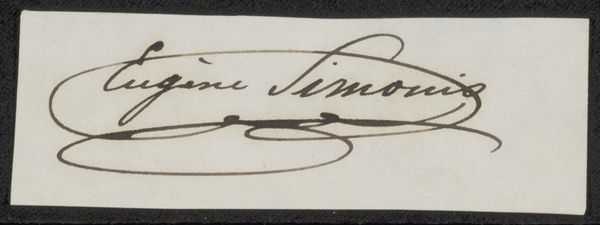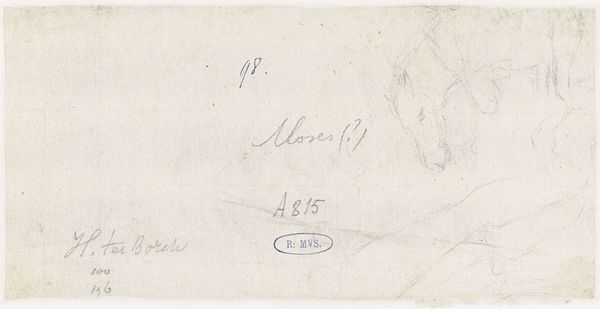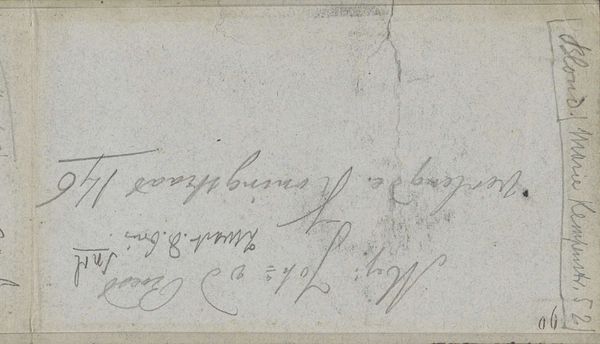
drawing, watercolor, ink
#
portrait
#
drawing
#
landscape
#
figuration
#
watercolor
#
ink
#
romanticism
Dimensions: height 56 mm, width 116 mm
Copyright: Rijks Museum: Open Domain
Editor: This is "Head Study and Fleeing Hare" by Johannes Tavenraat, made in 1839. It's a drawing rendered in ink and watercolor. It's strange... the pairing feels disconnected, like two separate thoughts on the same page. What do you see in this piece? Curator: It's interesting you pick up on that disconnect. I think we need to consider the Romanticism movement from which Tavenraat emerged. The juxtaposition, the 'portrait' with a fleeting hare, is a commentary. Tavenraat is placing humanity beside the raw, untamed essence of nature, a frequent Romantic theme. Editor: So, you are suggesting the artist is using both figures to convey something specific? How were people perceiving nature and the 'everyman' during this period? Curator: Absolutely! This was a period of burgeoning industrialization. The hare signifies the natural world shrinking away from the expanding reach of human society, the landscape and its fauna pushed to the margins. Simultaneously, this "head study," portrays a distinct person. Likely intended to embody the unsophisticated person quietly witnessing these rapid changes. Does knowing this affect your perspective on its "disconnected" feeling? Editor: It does actually! That makes their combination far more meaningful now. This single drawing captures so much societal anxiety. It no longer appears disjointed, but thoughtfully arranged. Curator: Indeed, and this reading demonstrates how an artwork participates in public discourse, how imagery is never neutral, always imbued with the concerns of its time. Editor: It's amazing to learn how the placement of what might appear like disparate objects reveals deeper contextual meanings.
Comments
No comments
Be the first to comment and join the conversation on the ultimate creative platform.

